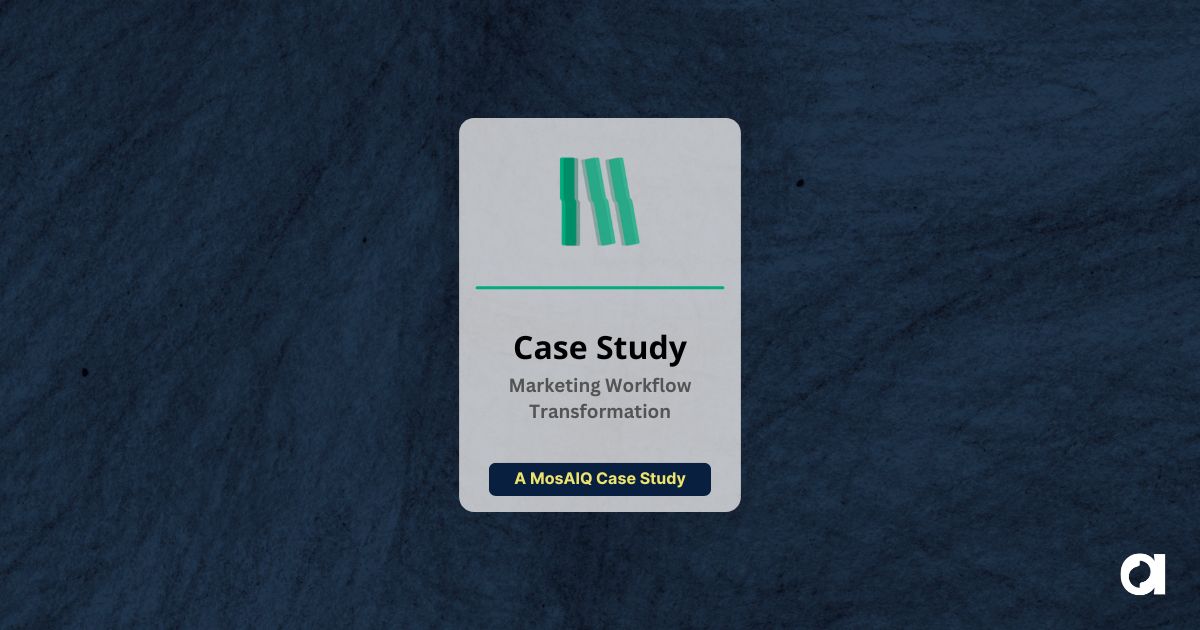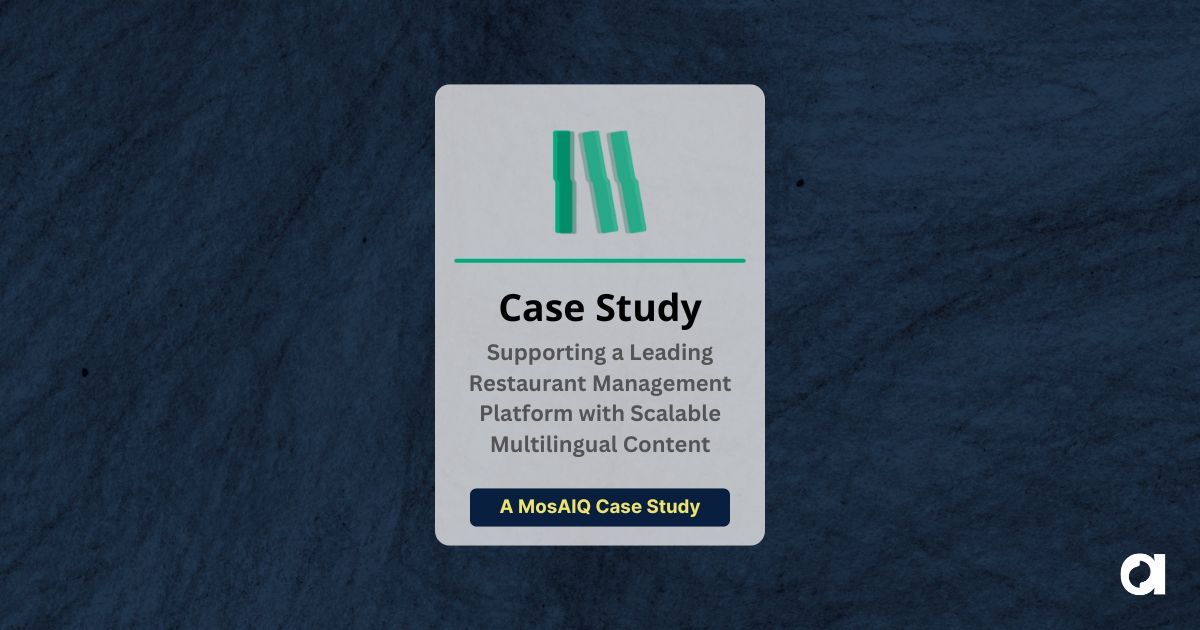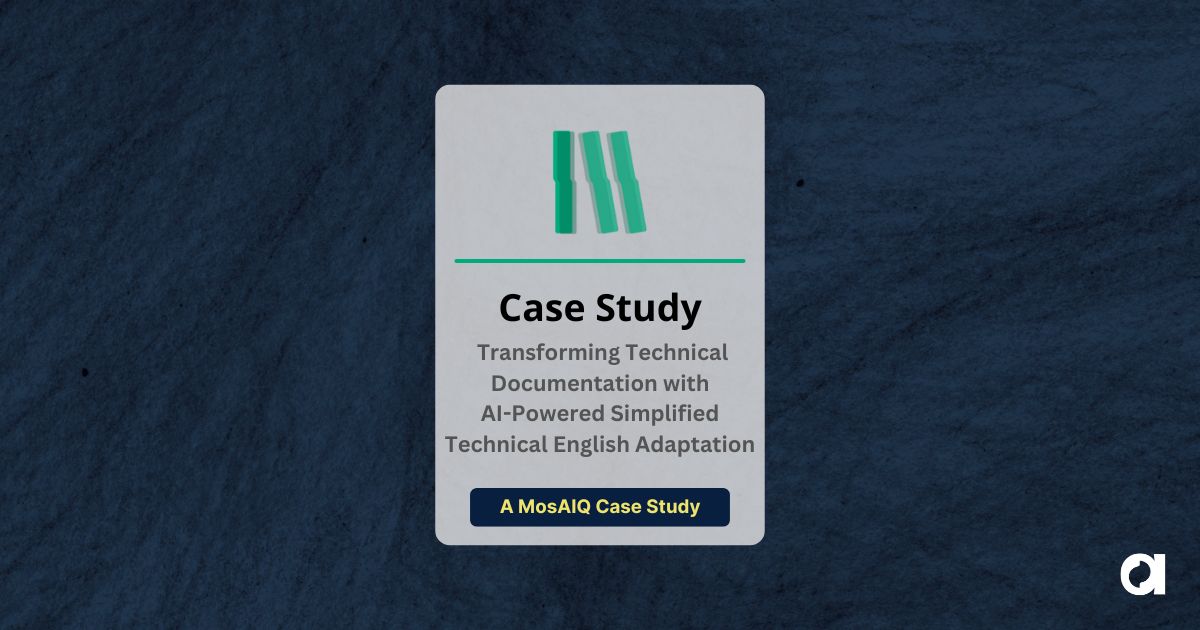Guess what? You don’t need to translate content into 20 languages to have a localization problem. If your company has a website, software, or marketing content, chances are that someone outside your home market will probably read them. The real question is: will your materials work for them, or will they create problems you didn’t plan for?
For companies expanding internationally, translation alone isn’t enough. Information needs to be structured so it can scale efficiently across different languages and markets. That’s where global-ready content comes in.
In one of our most popular Argos Multilingual webinars, content strategist Katherine (Kit) Brown-Hoekstra shared five essential strategies for making materials work across markets. These aren’t theoretical ideas—they’re practical, actionable fixes that help companies reduce localization costs, avoid last-minute rework, and make their documentation easier to manage across languages.
If your resources aren’t structured for international use from the start, you might pay for it later. Here’s what you need to know for your content localization strategy and why it matters.
1. Planning for the Future: Build Content That Scales Globally
Too many businesses wait until they need translation before thinking about localization. By then, their content is full of structural issues that make translation costly, slow, and frustrating.
Designing content with international use in mind from the start saves time and money. If your company has a public-facing presence, you’re already operating in a global market—whether you planned for it or not.
What does that mean in practice?
- Structure documentation for multilingual use. If your content isn’t built to handle translation, every language update becomes an expensive fix.
- Think beyond a single market. Formatting, terminology, and design choices should support expansion rather than limit it.
- Make room for text expansion. Some languages take up more space than others. Without flexible layouts, translated content can break interfaces, documents, and designs.
A little planning goes a long way. Companies that build scalable content from the beginning avoid major headaches when they’re ready to expand.

2. Structuring Content Right the First Time
Disorganized content slows everything down. When information is scattered, inconsistent, or buried in rigid formats, localization becomes expensive and inefficient. A structured system prevents these problems by keeping materials organized across multiple languages.
Modular content makes this possible. Instead of translating the same material over and over, teams can reuse standardized components across different formats and languages. A structured system also keeps terminology consistent, reducing errors and back-and-forth corrections.
Metadata plays a role here too. Tagging content properly makes it easier to find, update, and localize. Without it, companies end up translating outdated material or missing critical updates in key markets.
A little organization goes a long way. When content is structured well, it’s easier to maintain, scale, and adapt—without turning localization into a logistical nightmare.
3. Managing Change: Keep Content Updates Under Control
Revisions happen, but when they aren’t managed carefully, they can derail your content localization strategy. A last-minute edit in the source language might seem small, but in translation, it becomes a logistical nightmare. If content is already mid-localization, that single change means translators and reviewers must rework multiple versions, adding unnecessary costs and delays.
Uncontrolled edits don’t just affect workflows—they introduce inconsistencies. If teams don’t have a clear system for managing updates, outdated versions may circulate, causing confusion across different languages and markets. And when multiple stakeholders make changes independently, translations can become fragmented, forcing additional reviews to maintain accuracy.
The best way to avoid these problems is to lock down content before localization begins. Every revision should go through a controlled process, with clear guidelines on what qualifies as an essential change. Version control tools help teams track updates, ensuring that everyone is working from the latest, most accurate version. When changes are necessary, they should be prioritized, documented, and timed to minimize disruption.
Change is inevitable, but chaos isn’t. When content is structured well, localization becomes smoother, revisions are easier to manage, and updates happen with fewer disruptions.
4. Clear Writing Improves Translation Accuracy
Poorly written content causes unnecessary delays in translation. When sentences are vague, inconsistent, or overly complex, localization teams spend more time deciphering meaning than actually translating. That leads to errors, rework, and higher costs.
Clarity starts with consistency. Shifts in tone, difficult sentence structures, and industry jargon create confusion for translators and reviewers. Phrases that make perfect sense in one language might not translate smoothly into another. Writing with an international audience in mind—using straightforward structures and avoiding unnecessary idioms—reduces ambiguity and improves accuracy across languages.
The more effort put into refining content before localization, the better the results. When writing is structured well, teams can maintain meaning across languages while reducing the need for constant revisions.

5. Quality at Source: Fix Issues Before Localization Begins
Every time source content changes mid-localization, it triggers expensive, time-consuming updates across all translated versions. The best way to avoid this is by applying the ideas and strategies behind Quality at Source, ensuring that content is polished and consistent before translation even starts.
Editorial oversight catches unclear phrasing, inconsistencies, and terminology gaps early, preventing confusion down the line. A well-defined terminology management system standardizes key terms, ensuring they remain consistent across all languages. Localization testing helps confirm that translated content is formatted correctly, uses appropriate terminology, and functions properly in different markets.
Companies that invest in Quality at Source reduce translation costs, minimize errors, and speed up time-to-market. Strong source content makes localization more efficient and ensures that content is effective in every language.
The Long Game: Global-Ready Content Pays Off in the Long Run
The bottom line is that companies that treat their content localization strategy as an afterthought end up paying for it in wasted time, budget overruns, and content that doesn’t work across markets. But teams that plan for global readiness from the start see real benefits: faster turnaround times, lower costs, and fewer roadblocks when entering new markets.
A well-organized framework is easier to manage, keeps messaging consistent, and adapts more smoothly to future updates. When information is designed with scalability in mind, businesses spend less time fixing problems and more time reaching new audiences.
Want to see these strategies in action? Watch the full webinar for a closer look at what it takes to create and manage global-ready content.
At Argos Multilingual, we help businesses build content strategies that scale across languages and markets. Contact us to find out how we can support your global content needs.
 Leslie Iburg
8 min. read
Leslie Iburg
8 min. read
For years, language access in healthcare has been handled from the point of view of compliance. It was something that had to be done, but not necessarily something built into how care was delivered or measured. Today, that’s starting to change. More healthcare leaders are now taking a closer look at the connection between communication […]

 Argos Multilingual
6 min. read
Argos Multilingual
6 min. read
Localization is a careful balancing act. Keeping translation projects organized across multiple teams, file formats, and languages isn’t easy. The more moving parts there are, the easier it is for things to slip through the cracks. If you’ve ever opened a file and wondered whether it was the latest version or why a key term […]












